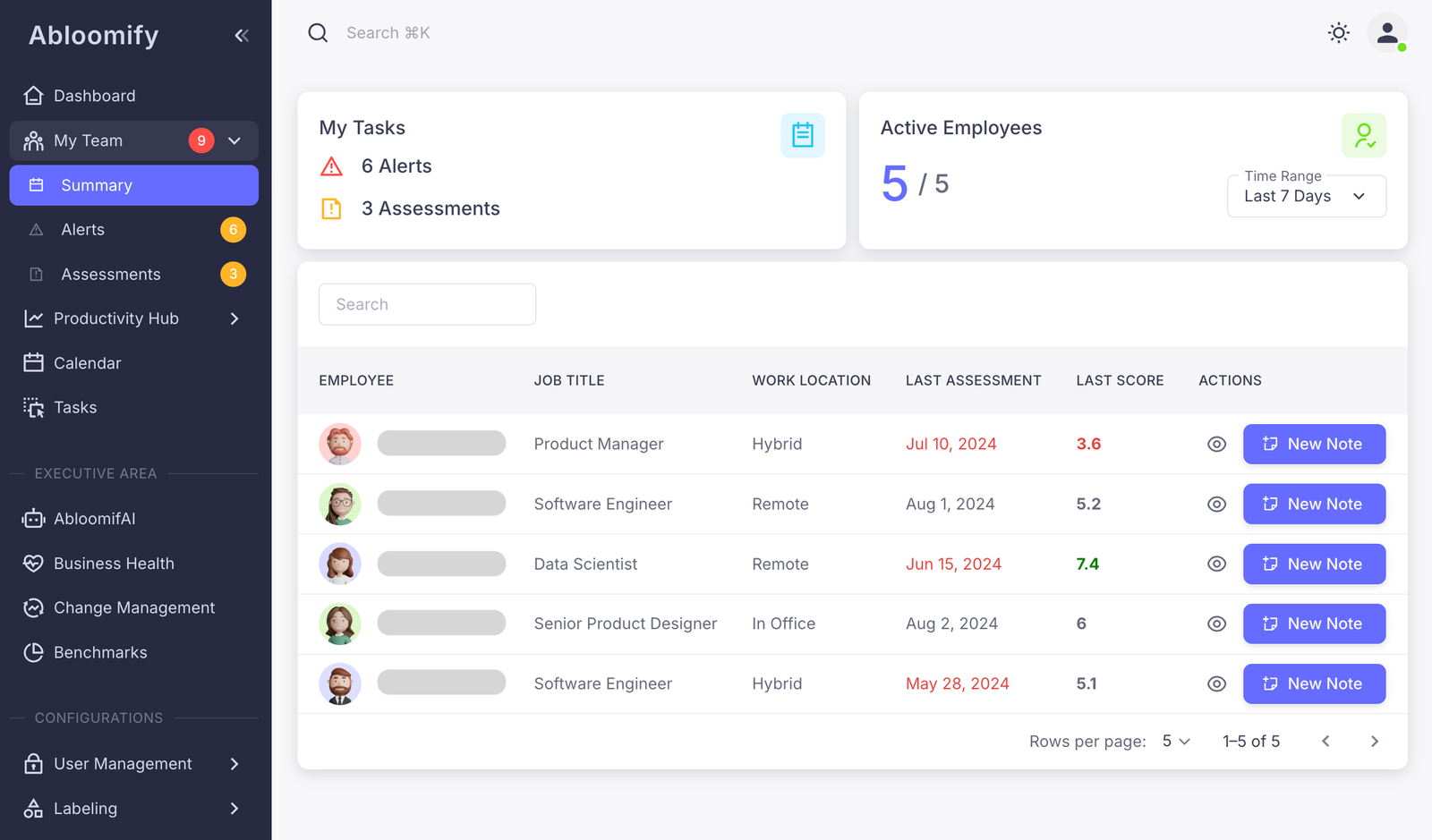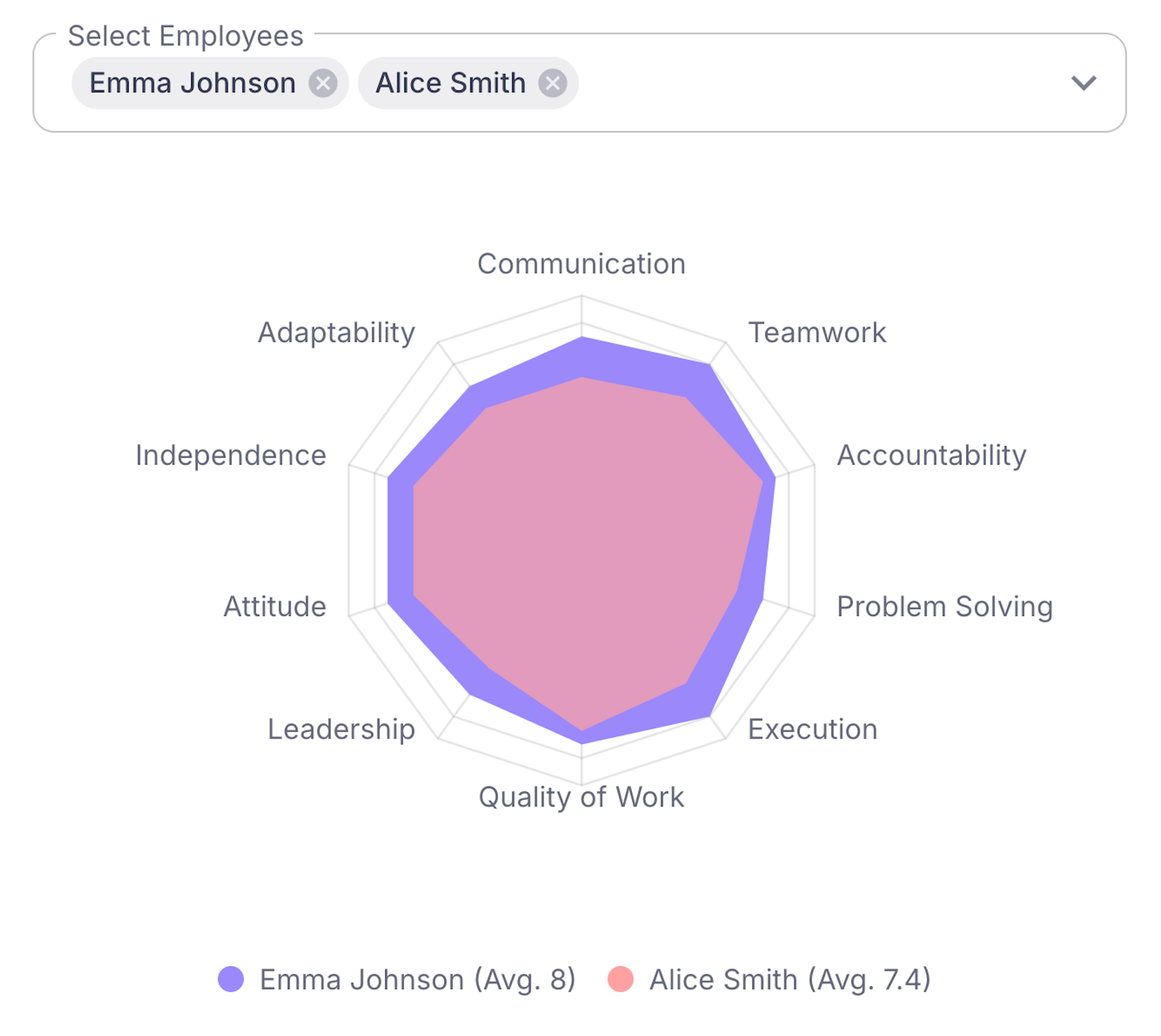Effective performance management is crucial for building thriving tech teams. This article explores key elements that drive measurable efficiency and growth.
Defining Effective Performance Management
Imagine a workplace where everyone is on the same page, united by a common purpose. The essence of effective performance management lies in fostering this alignment. It starts with crystal-clear goals that each team member understands and embraces. But setting goals is just the beginning. We must constantly engage in conversations that provide direction, encouragement, and a sense of belonging.
Key components to consider include:
- Goal Alignment: Every team member should understand how their work contributes to the organization’s overarching vision. This alignment turns individual efforts into collective victories.
- Continuous Feedback: Regular check-ins enable immediate course corrections and foster a culture of learning and growth. Feedback becomes a vital tool, not a dreaded task.
- Result Measurement: Clear metrics and performance indicators help teams track progress and celebrate successes. They also guide us in identifying areas for improvement without aligning blame.
Such components build the foundation for high-performing teams. They encourage innovation, where team members take calculated risks without fear of failure.
In the crossroads of effort and accountability emerges sustainable growth—both for individuals and the organization. This growth is nurtured when teams resonate with a shared purpose. Understanding the “why” behind their contributions fuels their motivation.
By harnessing these principles, organizations create environments that inspire their people to be their best selves. This approach is not just about managing performance. It’s about unlocking potential, instilling a sense of ownership, and creating impacts that ripple beyond the workplace.
To delve deeper into the strategies that inspire motivation within teams, consider exploring how performance management can motivate employees.
The Role of AI and Data in Performance Management
The digital age presents an opportunity to redefine performance management. AI and data-driven tools are reshaping how we approach this pivotal task, making it more insightful and impactful. This is not just about efficiency; it’s about enhancing lives at work.
AI’s capabilities usher in predictive analytics that empower managers to anticipate challenges before they arise. Whether pinpointing potential burnout or identifying skills gaps, AI gives leaders the data they need to intervene effectively. Real-time feedback further enhances this, allowing for immediate adjustments and support.
Consider the benefits of leveraging a robust AI platform in performance management:
- Enhanced decision-making: Access to data-driven insights means decisions are not just guesses, but informed actions.
- Proactive management: Predict burnout or disengagement, not after the downturn, but as it’s about to happen, allowing a course correction.
- Continuous growth: Employees receive constant, data-backed feedback that guides them to improve, aligning personal goals with the company’s mission.
Unlocking the full potential of these tools necessitates a new mindset. AI in performance management isn’t about replacing humanity with machines. It’s about augmenting our capacity to support and grow our teams. Embracing these technologies can lead to a workplace transformation, akin to an evolution rather than a disruption. Discover more with this detailed exploration of workforce analytics.
As we harness the power of AI, we shift from reactive to proactive, from measuring to empowering. It’s about creating an environment where everyone thrives, contributing to a greater cause. This is the essence of effective performance management.
Building High-Performing Teams
The essence of building high-performing teams lies in understanding why each element of team dynamics matters. When teams excel, it isn’t by accident. High-performing teams are the result of deliberate choices, a culture that prioritizes clear goals, collaboration, and accountability.
Start by setting clear goals. This isn’t just about knowing what to do but understanding why it matters. Clear goals provide direction and motivation. They transform a group into a team with purpose. Here’s how it works:
- Define objectives that align with organizational values.
- Communicate goals effectively to foster shared understanding.
- Ensure each individual’s role is linked to these goals.
Fostering collaboration is next. When individuals understand their shared purpose, collaboration becomes more intuitive. Encourage open communication to break down silos. In high-performing teams, members trust each other, valuing diverse perspectives.
Accountability ties it all together. Without it, teams can’t sustain success. Accountability ensures that everyone contributes and respects the commitment to shared goals. It promotes integrity and continuous improvement.
When it comes to creating these connections, structured frameworks and AI assessments provide invaluable support. Through systematic frameworks, teams remain aligned with clear benchmarks for success. AI assessments offer insights into team dynamics, helping leaders make informed adjustments.
Abloomify aids teams in this journey, utilizing data-driven tools that nurture productivity and engagement. To explore how performance management and engagement intersect, consider diving deeper into strategies that boost employee engagement.
Building a high-performing team isn’t just about meeting targets. It’s about understanding each person’s “why,” fostering environments where collaboration thrives, and creating systems that ensure accountability for everyone.
Continuous Feedback and Development
In the pursuit of nurturing high-performing teams, continuous feedback and development play an essential role. They act as the bedrock for personal and professional growth. Continuous feedback offers a dynamic exchange between team members and leaders. This constant communication fosters trust and aligns team objectives with personal goals. It’s the “why” behind staying receptive and evolving.
Regular one-on-one meetings create a space where expectations and aspirations can be clearly communicated. They are crucial for recognizing achievements and identifying areas for growth. These interactions build a culture of transparency and accountability that empowers every team member to contribute meaningfully.
360° feedback brings diverse perspectives, bridging the gap between perception and reality. It encourages peer-to-peer recognition and promotes a culture of inclusivity. This holistic approach to feedback makes sure that everyone is heard, valued, and aligned with the team’s goals.
Personalized development plans ensure that each person evolves in their strengths and ambitions. Tailored to individual needs, these plans serve as a roadmap for success, enhancing engagement and motivation. It’s about creating a pathway where every team member feels valued and invested in their journey.
By automating these processes, technology transforms vision into action, making time management far more efficient. Automating feedback and development processes allows leaders to focus on strategic actions. This innovation transforms performance management from a task into an inspiring journey of growth and potential, enabling teams and leaders to harness their full potential.
For strategies on improving performance management, refer to this guide: how to improve performance management.
Ensuring Work-Life Balance and Preventing Burnout
Why does effective performance management matter in a rapidly evolving landscape? Because it nurtures environments where balance and productivity coexist. Key to this equilibrium is ensuring that employees maintain a healthy work-life balance, free from burnout. Understanding the “why” behind this balance empowers actionable steps.
When we think about burnout, it’s crucial to recognize the state of disengagement it breeds. If left unaddressed, it can spread like wildfire within teams. But what if we could detect disengagement before it cripples productivity? AI-driven alerts offer a proactive approach, acting as sentinels that detect early warning signs of burnout among team members. These insights allow organizations to respond swiftly and prevent potential crises.
For employers committed to fostering supportive environments, AI tools can transform how teams address balance and productivity:
- Real-Time Insights: AI evaluates stress indicators, providing a comprehensive view of potential burnout risks.
- Customized Interventions: Tailored strategies for individual needs help maintain engagement and morale.
- Preventive Measures: Alerts enable management to preemptively offer support before issues escalate.
Consider how leveraging insights from technology can create a workplace where productivity thrives while preventing exhaustion. Emphasizing proactive measures equips organizations to offer meaningful support, ensuring not just efficiency but also human-centric growth. Just as continuous feedback fosters growth, consistent attention to work-life balance sustains motivation and wellbeing. Together, these components create a comprehensive performance management strategy that upholds a healthy workplace culture.
Flexibility in Modern Workspaces
In our quest to shape environments where creativity and productivity thrive, flexibility in work arrangements emerges as a cornerstone. Are we fostering an ecosystem that supports diverse needs and aspirations? Effective performance management acknowledges the fluidity required in modern workspaces, not as an afterthought but as an essential ingredient.
Flexibility goes beyond choosing where to work. It’s about enabling autonomy and promoting accountability, forging a path where trust becomes the foundation for stellar performance. But how do we get there?
– **Adaptable Tools:** Implement technology that caters to multiple work styles. Such tools should seamlessly integrate into various setups, whether office-based or remote. Connecting teams without imposing barriers paves the way for authentic collaboration. Check out how performance management systems can be strategic enablers.
– **Clear Expectations:** Set clear, measurable objectives. Empower individuals with the freedom to reach these goals in their unique way. Teams flourish when valued for their contributions and supported in their methods.
– **Regular Feedback Loops:** Foster open communication channels, allowing for continuous feedback rather than relegating it to periodic reviews. This fluid exchange of ideas ensures agility in addressing challenges.
Implementing these approaches requires a shift in mindset. It’s about seeing technology not as a threat, but as a partner in this journey. When we embrace flexibility, we kindle inspiration, where team dynamics are enhanced, and potential is unlocked. Here lies the crux of effective performance management: appreciating the “why” behind flexibility can transform our workplaces into arenas of empowerment and growth.
Integrating AI and Technology
Imagine a world where technology works hand-in-hand with human efforts, unlocking potential and empowering productivity. Integrating AI and technology in performance management can do just that. These tools don’t just automate tasks—they revolutionize how work is perceived and executed.
When technology and AI seamlessly sync with existing systems, the magic begins. Teams can save time and energy by automating repetitive tasks and allowing employees to focus on what truly matters—creative problem-solving, innovation, and collaboration. No more losing valuable time switching between multiple platforms or feeling bogged down by tedious administrative duties.
Here’s how thoughtful integration enhances workplace productivity:
- Efficiency Amplification: AI analyzes data faster, offering real-time insights that empower quick, informed decisions.
- Enhanced Workflow: Streamlined processes reduce friction, providing a smoother journey from task initiation to completion.
- Seamless Communication: Integrated tools enhance interdepartmental communication, breaking silos and enhancing team synergy.
For companies looking to stay ahead, leveraging AI is a strategic imperative. These systems can empower teams to rise above mundane challenges and function at higher levels of innovation and creativity. Imagine the same ease with which your favorite music streaming app seamlessly integrates with smart speakers; that’s the vision for the modern workplace.
To explore further, read about the role of AI in optimizing workforce performance. Technology shouldn’t disrupt but enhance the human experience, guiding teams to clearer paths of success. Every click, every interaction becomes more meaningful, fostering a workplace culture that truly thrives.
Leadership’s Role in Effective Performance Management
In the world of effective performance management, leadership stands as the cornerstone for nurturing a positive organizational culture. Leadership is not merely about making decisions or setting goals; it is about inspiring and guiding teams towards a shared vision. This requires a blend of essential qualities that transforms management practices into empowering experiences for every team member.
At the heart of this lies communication. Leaders who communicate openly build trust and foster an environment where everyone feels valued. This communication is not just about relaying information, but about starting meaningful conversations that drive engagement and innovation.
Empathy is another indispensable trait. It enables leaders to understand their team’s unique challenges and aspirations. Empathetic leaders create a safe space for employees to express their ideas and concerns, which leads to stronger connections and greater team cohesion.
Strategic vision is the compass that guides leaders in steering their teams towards long-term success. It provides a clear path for growth and enables leaders to align goals with the broader organizational objectives.
Leveraging insights from performance data can further enhance these leadership qualities. With actionable insights in hand, leaders can make informed decisions that drive positive outcomes. These insights empower leaders to tailor strategies that cater to individual strengths and address weaknesses.
Having access to tools that unlock leadership potential can propel performance management to new heights. When leaders are equipped with the right tools and mindset, they become the catalysts for an engaged, motivated, and high-performing team. This synergy between leadership and performance management can truly unlock the potential within an organization.
Measuring Success and Growth
Imagine a landscape where performance management serves as a compass, guiding a team towards growth and achievement. To navigate this terrain effectively, we require clear markers of success. Metrics become the beacons that illuminate our path.
The essence of measuring success starts with knowing what to measure. We need clear, specific metrics that align with organizational goals. Without clarity, efforts may become scattered, diminishing impact. Metrics should tell a compelling story about progress and areas of improvement, allowing teams to adapt and evolve.
Goal assessment transforms numbers into meaning. Metrics, while critical, are only pieces of the puzzle. Understanding how they contribute to the overarching goals completes the picture. Regular assessments ensure that goals remain relevant and attainable, bridging the gap between ambition and reality.
Continuous improvement forms the cycle of refinement. Establish feedback loops that enable perpetual learning and tweaking of strategies. These loops are vital for ensuring that performance management evolves with the changing dynamics of the workplace. They foster a culture that embraces growth as a journey, not a destination.
Data-driven insights are the fuel for this journey. They transform raw data into actionable strategies, illuminating pathways to success. Harnessing these insights keeps management practices not only relevant but transformative. This is where the reality of effective performance management crystallizes, balancing data with human insight to achieve transformative growth.
This interconnected approach encourages teams to not just meet expectations but to exceed them, creating a workplace culture that celebrates continuous improvement and shared success.
Creating a Culture of Trust and Privacy
Imagine a culture where trust and confidentiality lay the foundation for collaboration and innovation. Trust is not just a concept but a vital element that inspires individuals to contribute their best. It’s about creating an environment where employees know that their privacy is respected and their data is handled ethically.
To achieve this, organizations can focus on essential principles:
- Privacy-first Design: Implementing a privacy-centered approach ensures that any data collected is minimal and necessary. Employees should always be aware of what data is being collected and why.
- Aggregate Insights: Instead of pinpointing individual performance, utilizing aggregate data provides insights into team and organizational trends. This approach retains anonymity and reduces pressure on individuals.
- Transparent Policies: Clearly outline data collection and usage policies. Open dialogue allows employees to express concerns and understand how insights are used for improvement.
- Empathetic Leadership: Leaders should model behaviors that prioritize trust. This includes promoting open communication, acknowledging accomplishments, and respecting confidentiality.
- Regular Audits and Feedback: Conduct regular audits of data practices and solicit employee feedback. This demonstrates a commitment to evolving privacy and trust standards.
Organizations dedicated to these principles foster environments where innovation thrives and teams feel safe and valued. For deeper insights into enhancing employee trust through effective management, visit the article on how to improve performance management. This journey towards trust not only bolsters performance but also reinforces a culture of integrity and respect.
Final words
In conclusion, effective performance management is about integrating meaningful insights and actionable strategies. Lead your team to sustainable growth by exploring using the link: Abloomify’s AI solutions today.



